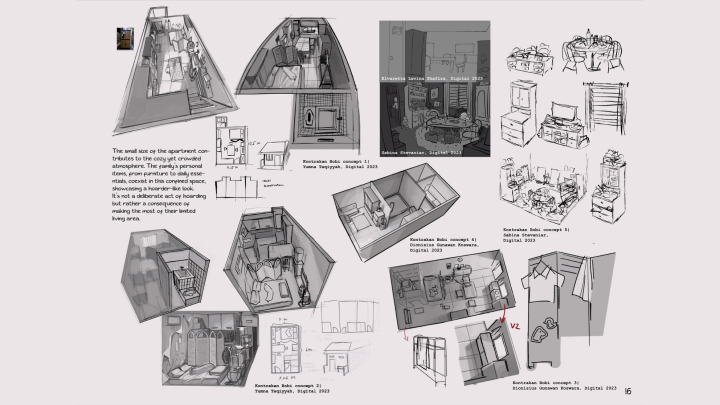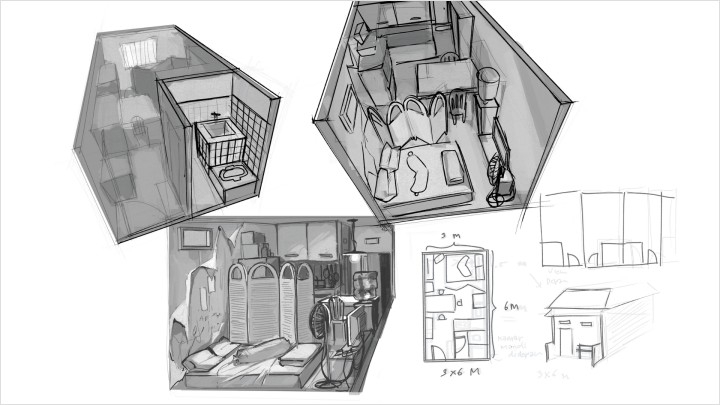[Course]2danimationteam,icikiwirproductions Details
In-Depth Look
- SECTION 01
OT
01. Orientation- Meet your instructors and learn about the overview of this class - Helpful resources and alternative softwares
- SECTION 02
Introduction
02. What Makes a Great Animation vs Good Animation- What makes renowned filmmakers' works special - How animation can convey emotions and meaning to audiences - Understanding the type of animation we want to make
03. The Fundamentals of Storytelling- Basics of making a logline and premises - Themes, genres, and concepts - Story structure basics - Story Structure #1: The Hero's Journey - Story Structure #2: The Five Stages of Grief - Story Structure #3: Three Act
04. Starting an Idea (Creative Process)Discussion topics: - How to not limit yourself - The importance of observing and experiencing the world around you - Turning simple things into ideas Visuals: - Sketching out story ideas through thumbnails, rough concepts and designs - Making a visual journal
05. The Importance of Research- How accuracy and authenticity can contribute to the story's depth and complexity - How accuracy and authenticity can deepen your understanding of the story - The risks of having no research
06. Introducing the Basic Animation Pipeline- The basics of pre-production, production, and post-production - Roles in indie productions and dividing workloads - Arranging resources from pre-production materials - The basics of a shotlist - The basics of making a production timeline - The importance of file management
- SECTION 03
Pre-production
07. Basics of Film Script- Key elements in basic script writing - Basic script format example and making - "Show don't tell" - Avoiding unnecessary dialogue and descriptions - Using strong characters - Pacing
08. Visual Development- Gathering images, textures, and references that align with your ideas - Developing and alternating concepts - Sketching out final looks
09. Character Design: The Basic Principles of Character Designing- The basic principles of character design - The three-dimensional character: psychology, physiology, and sociology
10. Character Design: Different Shapes and Sizes- How simple shapes can accentuate the character's silhouette and the viewer's perception - Picking colours and colour theory
11. Character Design: The Output- Introducing the format of a proper animation character sheet
12. Environment Design: The Basic Principles of Environment Design- The basic principles of environment designs - Concepting time, setting, and place
13. Environment Design: Concepting- Mapping out the floorplan - Interior and exterior
14. Environment Design: Output-The proper format of an animation environment sheet and guide
15. Basics of Storyboarding- Thumbnail sketches - Camera angles and movement - How to make the appearance and expressions of characters consistent - How to make environments and objects clear - The benefits of storyboarding - Tips and tricks
16. Making a Colour Script- Setting up each pallete based on the board - Understanding each mood and colour - Colour theory
17. Making an Animatic- Set up the shotlist based on the storyboard - Set up sequence shots based on the script - Timing and pacing - Sync audio - Screenings
- SECTION 04
Production
18. Animation Layouting- The basics of Toonboom Harmony - Setting up layouts for cuts based on the storyboard
19. First Pass of Rough Animation- Rough animation demonstration - Tips on principles of animation
20. Rough Animation Tiedowns- Tiedown demonstration - Tips for keeping your animation solid
21. Animation Keyframes- The importance of keyframes for keeping a solid animation - Keyframe timing tips and tricks
22. Animation In-Betweens- In-between tips and tricks
23. Animation Cleanup- Tips for cleaning up
24. Animation Colouring- Toonboom tips for colouring
25. Background Sketching- Sketching backgrounds based on layouts
26. Background Cleanup- Cleaning the sketch for a clearer image
27. Background Render- Rendering the background image
- SECTION 05
Post-Production
28. Setting up Rough Cuts- Exporting your cuts from Toonboom - The basics of arranging cuts in After Effects
29. Basic Compositing in After Effects- Introduction to presets and basic effects you can use
30. Colour Grading in After Effects- Improving colours in post-production
- SECTION 06
Bonus Chapter
31. Working as an Indie Production House: Distribution, Work Ethics, and Time Management- Distribution options - What are film festivals? - Merchandising and social media - Excelling in communication and conflict resolution - Work ethic - Buffers - Knowing who and what you are working with














